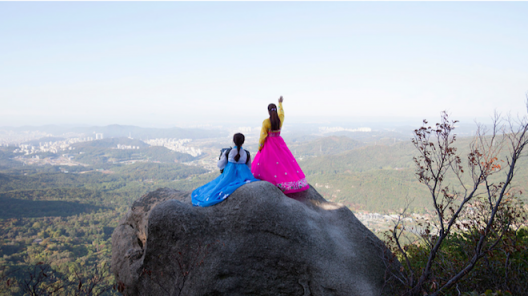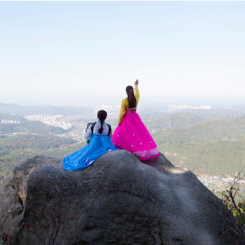[Press Release]
PAK SHEUNG CHUEN, IM HEUNG-SOON, TAO HUI, MINJUNG KIM, AND PRABHAVATHI MEPPAYIL
JANUARY 20–FEBRUARY 25, 2017
Esther Schipper is pleased to present The Mulberry Forest Becoming Ocean, a group exhibition with works by Pak Sheung Chuen, IM Heung-soon, Tao Hui, Minjung Kim and Prabhavathi Meppayil and curated by Shi-ne Oh. Following the 2008 CYLWXZ exhibition of Chinese artists, curated by Philip Tinari, this is the second curated exhibition at Esther Schipper focusing exclusively on Asian artists. The exhibition will include film, sculpture and work on paper.
The title, The Mulberry Forest Becoming Ocean, is based on a Chinese proverb invoking the constancy of change brought by time. All five artists included in the exhibition address the notion of time with distinct philosophical and artistic voices that, while informed by globalized discourse, have developed formal and conceptual vocabularies specific to their respective traditions. In addition, The Mulberry Forest Becoming Ocean highlights the unique approaches to the continued effects of colonial experiences— political, philosophical, cultural, artistic and personal. Aside from addressing an expanded present with distinct temporalities, histories, and experiences of time existing simultaneously, the artists included in The Mulberry Forest Becoming Ocean draw on philosophical traditions that consider time not strictly in linear terms, allowing for narratives of development, evolution, and recuperation of past.
Pak Sheung Chuen (b. 1977 in Fujian, China; 1984 immigrated to Hong Kong) will present new and historical works that, using materials such as water and wood that are both ubiquitous and specific, concrete and general, obliquely address the questions of identity, place and political conflict. Pak Sheung Chuen’s works often are based on performative tasks, for example by placing himself in situations of otherness during his extensive travels that alter the perception of one’s own identity. Mining the disjunction between the visual or graphic representation of locations and their experience, between man-made borders and the diffuseness of experiencing place, Pak Sheung Chuen creates quietly poignant works.

Film still: Im Heung-soon, Bukhansan/Bukhangang, 2015-2016 HD, 2-channel video, 5.1 Ch sound, duration: 28:12 min
Photo: © the artist, courtesy the artist and Esther Schipper, Berlin
Artist and filmmaker IM Heung-soon (b. 1969 in Seoul, South Korea) gained larger recognition in 2015 when he received the Venice Biennale’s Silver Lion for Factory Complex, a documentary about the labor conditions of women in factories. The social roles and living conditions of women is a recurring theme, part of his larger preoccupation with the politics and the psychology of suffering. A haunting work about the division of Korea, structured around a personal narrative, Bukhansan/Bukhangang consists of two parts screened simultaneously: while one film follows a woman during her climb onto the mountain Bukhansan, listening to her autobiographical narration, the other appears to depict glances into the narrator’s imagination and memories. The mountain Bukhansan (a name that both designates the mountain and literally means “big mountain in the north”) becomes both a political and a personal symbol. The second part centers on Bukhangang—the name of a tributary of the Han River, that flows through both North and South Korea, crossing the Korean Demilitarized Zone.
The youngest of the five artists in the exhibition, Chinese artist Tao Hui (b. 1987 in Chongqing, China) will present two videos. Excessive (previously included in the artist’s major 2015 solo exhibition at the Ullens Center of Art) centers on a girl whose extra finger causes her parents great distress. A film about family, prejudice and otherness, Excessive combines dramatic acting and aspects of great artifice, recalling the aesthetics of Chinese TV dramas and movies. The second film, Talk About Body (2013), creates a scenario in which the words spoken by the central speaking figure—surrounded by several adults sitting or standing who face the person seated on a bed—function as sign of estrangement. The figure, in fact, the artist himself, talks about corporeal and genetic traits associated with racial and regional typology. Akin to a gathering around a sick-, deathbed or a wake, the monologue is both technical and unashamed, concluding with a spoken resolution “to give up all of my prejudice and create my body by natural facts.” Societal norms are given scientific, statistical explanations—while their evolution and persistence remain unclear.
Minjung Kim’s (b. 1962 in Gwangju, South Korea) works on and of paper draw on the Korean tradition of process-oriented art. Indebted to the formal traditions of ink calligraphy and 1970s monochrome art (known as Dansaekhwa), the artist forges thoughtful meditations on fragility and strength, chaos and order. Made from mulberry paper and fire, creating abstract patterns from delicate burns, Kim draws on the destructive power of fire to alter the paper in extremely controlled, yet essentially arbitrary, manner of mark-making. Thus, the thin semi-transparent paper (also known as hanji or Korean paper, a material known to last two thousand years), becomes adorned with the marks of its own destruction, drawing attention to the simultaneous existence of different temporalities.
Prabhavathi Meppayil (b. 1965 in Bangalore, India) transposes the techniques and materials associated with the artist’s family’s ancestral practice of goldsmithery into a contemporary plastic language that belongs to the modernist canon, whether by embedding copper wires—or occasionally remnants of silver or gold—in layers of white gesso, or by marking its surface with tools traditionally used by goldsmiths. While her process-oriented, meditative aesthetics are indebted to 20th century modernism, Meppayil’s performative operations echo the artisanal and cultural traditions of the artist’s background, creating works that are both literally and metaphorically embodiments of distinct moments and traditions.
